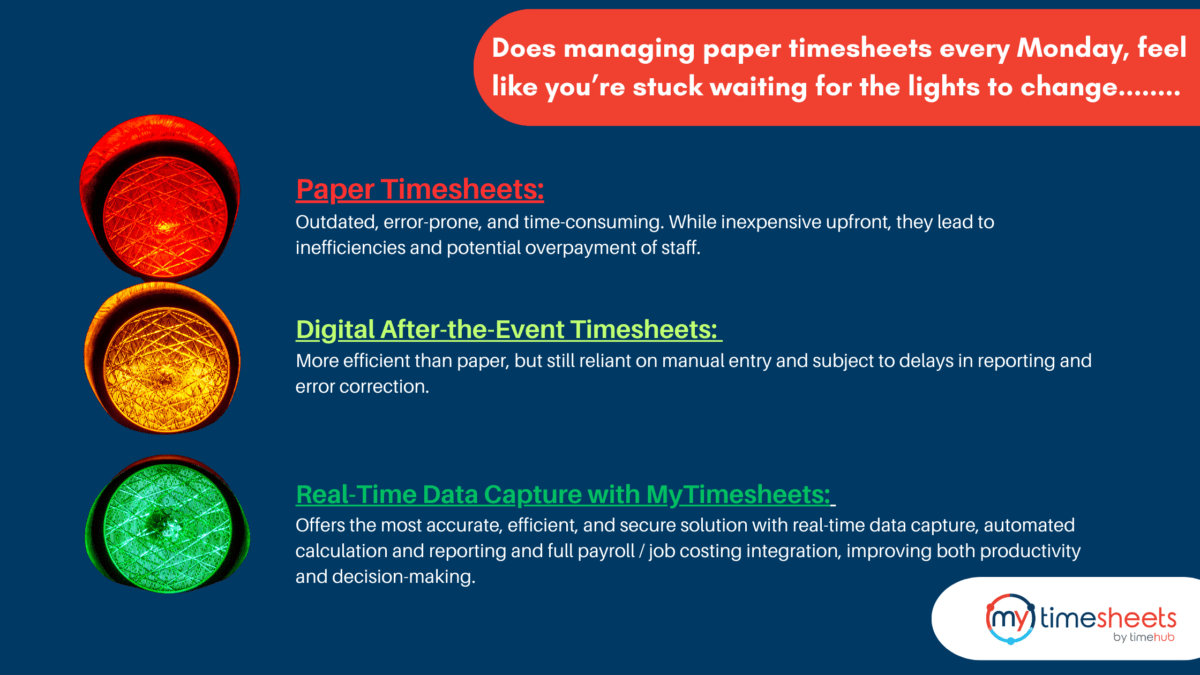Managing paper timesheets every Monday can often feel like an exercise in frustration, akin to waiting for traffic lights to change. This analogy captures the essence of the inefficiencies and monotony associated with traditional time-tracking methods. Let’s explore this idea further.
The Slow Pace of Progress
Just as waiting at a red light can feel interminable, the process of collecting, reviewing, and processing paper timesheets can be equally tedious. Employees may spend valuable time filling out their hours, only for managers to sift through stacks of paper, often leading to delays in payroll and project tracking.
- Time Consumption: The manual entry and verification process can take hours, consuming time that could be better spent on productive tasks.
- Bottlenecks: Just as traffic builds up at a red light, bottlenecks occur when multiple employees submit their timesheets simultaneously, causing delays in processing.
The Risk of Errors
The reliance on paper introduces a significant margin for error. Mistakes in recording hours can lead to discrepancies that require additional time to resolve.
- Human Error: Just as a driver might misjudge the timing of a light change, employees might miscalculate their hours or forget to log certain tasks.
- Lost Documents: Paper timesheets can easily be misplaced or damaged, leading to further complications and delays.
The Frustration of Inefficiency
Being stuck at a red light is often accompanied by frustration and impatience. Similarly, the inefficiencies of managing paper timesheets can lead to dissatisfaction among employees and managers alike.
- Employee Morale: Repetitive tasks that feel unproductive can diminish employee morale, much like the irritation of being stuck in traffic.
- Management Overhead: Managers may find themselves bogged down in administrative tasks rather than focusing on strategic initiatives.
Seeking Solutions
Just as drivers look for alternate routes when faced with traffic jams, organizations can seek solutions to streamline their time-tracking processes.
Embracing Technology
Transitioning from paper to digital solutions can significantly reduce the inefficiencies associated with manual timesheet management.
- Time Tracking Software: Utilizing software allows for real-time tracking of hours worked, reducing errors and improving accuracy.
- Mobile Accessibility: Employees can log their hours on the go, making the process more flexible and efficient.
Implementing Best Practices
Adopting best practices can also enhance the efficiency of timesheet management.
- Clear Guidelines: Providing clear instructions on how to fill out timesheets can minimize errors.
- Regular Check-Ins: Managers can conduct weekly check-ins to address any issues before they escalate.
Conclusion
Managing paper timesheets every Monday can indeed feel like waiting for traffic lights to change—slow, frustrating, and filled with potential pitfalls. By embracing technology and implementing best practices, organizations can transform this cumbersome process into a streamlined operation that enhances productivity and employee satisfaction. Just as green lights signal to go, effective time management solutions pave the way for smoother operations and greater success.
If you would like to arrange a no-obligation discussion about how you can take time out of managing employee attendance, you can book that here
